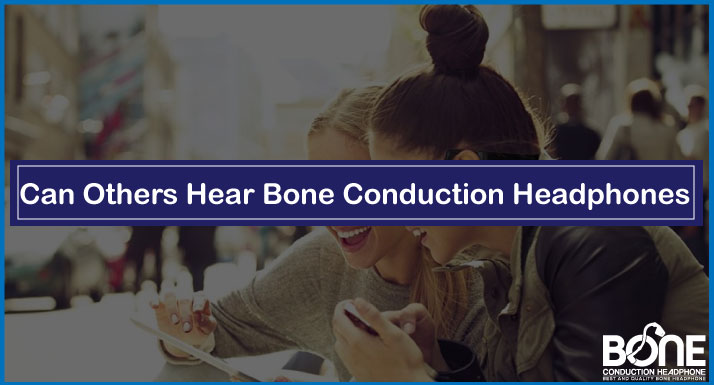Are you curious about whether others can hear the audio you’re enjoying?
In this blog post, we delve into the intriguing world of bone-conduction headphones and explore the question on every user’s mind whether can others hear what you’re listening to. Read along as we uncover the potential benefits of bone-conduction headphones for your hearing, and shed light on the downsides of these headphones you may need to be aware of.
Get ready to amplify your knowledge!
Can Others Hear Bone Conduction Headphones
While bone conduction headphones transmit sound vibrations to your inner ear, a portion of those can escape and be faintly heard by people in close proximity. This occurs especially when the volume is set too high, allowing the sound waves to travel through the air and become audible to others.
However, there are specific situations where sound leakage may be more noticeable. For instance, if someone touches you while wearing the headphones, they may feel the vibrations. Additionally, wearing glasses can contribute to sound leakage as the frames can act as a conductor. In contrast, by switching to contact lenses, this issue can be resolved.
Despite these considerations, bone conduction headphones are generally quieter than traditional ones since their sound is primarily designed to resonate against the bones of your skull rather than propagating through the surrounding air.
Can Others Hear Your Music With Bone Conduction Headphones?

With these headphones, the sound vibrations are transmitted through your skull bones to reach your inner ear, bypassing the eardrums. While these headphones are designed to provide a more private listening experience, it’s still possible for others to hear your music, albeit at a significantly reduced volume compared to what you hear.
Sound leakage occurs when some of the vibrations radiate outwards, allowing nearby individuals to perceive faint ambient sounds or vibrations. However, the extent of sound leakage depends on factors such as volume levels, environmental conditions, and the fit of the headphones.
Overall, bone conduction headphones are generally quieter than traditional headphones, making it less likely for others to hear your music unless it is played at high volumes or there is physical contact between you and others.
Do Bone Conduction Headphones Protect Hearing?

Bone conduction headphones offer potential benefits in terms of protecting hearing. Unlike traditional headphones that cover or go inside the ears, bone conduction headphones bypass the eardrums and transmit sound vibrations through the bones of the skull directly to the inner ear.
This means they do not block the ear canal, allowing users to maintain awareness of their surroundings. By avoiding direct exposure of the eardrums to high sound pressure levels, bone-conduction headphones can reduce the risk of hearing damage associated with prolonged and excessive noise exposure.
However, it is still important to use these headphones responsibly and avoid excessively high volume levels to ensure optimal hearing protection.
What Are The Downsides Of Bone Conduction Headphones?
While bone conduction headphones offer unique advantages, they also have some downsides. One of the main drawbacks is the potential for sound leakage. Since the headphones transmit sound vibrations through the bones of the skull, some of the audio can escape and be heard by others nearby.
Additionally, compared to traditional headphones, the audio quality may be compromised, with reduced bass response and overall clarity. Another limitation is that bone conduction technology may not be suitable for individuals with certain types of hearing loss or conditions affecting the bones of the skull.
Finally, these headphones tend to be more expensive than conventional options, making them less accessible to some consumers.
Wrapping Up
In conclusion, bone conduction headphones provide a unique listening experience and potential hearing protection. While they have downsides like sound leakage and compromised audio quality, their benefits make them a viable choice for those seeking situational awareness and reduced ear canal blockage. Consider your preferences and needs when choosing these headphones.
FAQs
What hearing level is bone conduction?
Bone conduction can provide hearing at a near-normal or normal level, as it bypasses the outer and middle ear and directly stimulates the inner ear. However, the effectiveness of bone conduction may vary depending on individual factors such as the specific hearing loss condition and the type of bone conduction device used.
How do you test hearing with bone-conduction headphones?
Hearing with bone-conduction headphones can be tested using a bone-conduction audiometry test. This involves placing the headphones on the skull bones to transmit sound vibrations and measuring the individual’s hearing thresholds to assess their hearing ability through bone conduction.

